There are a lot of stories out there about climbing Mt Ijen in Indonesia and a lot of misconceptions both about the difficulty of the climb and how many people you will be sharing it with. Whether you’re an experienced climber or complete novice the blue fire and the largest acid lake in the world make it worth the trek. Find out exactly what to expect here.
Location
Mt Ijen is a volcano located close to the Indonesian town of Ketapang, the first town in east Java, close to the island of Bali, making Mt Ijen a good (but long) day trip from the holiday island. From Ketapang, base camp is a further one-hour, up hill by car to the place from which you can begin your climb.
Do be aware that if you are coming from Bali, that you are now on the island of Java, which is very different. For a start the people here are followers of Islam, not Hinduism so be prepared for mosques and ladies should consider wearing conservative clothes so as not to cause cultural offense. Infrastructure and the quality of amenities such as hotels and restaurants are also not up to the same standard as Bali. Be prepared for things to be slightly less geared towards international tourists (there are plenty of local Indonesian tourists) and for things to be a bit more local and on the simple but functional side.
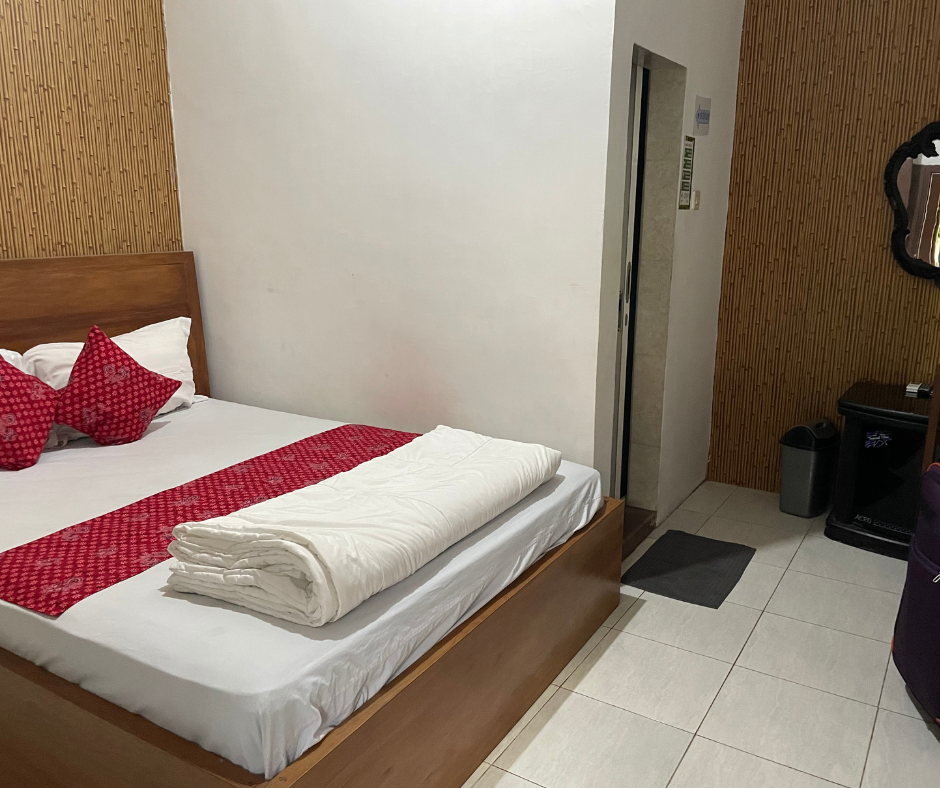
How to get there
To get there you will most likely need a tour company, you will definitely need a guide. There are many companies offering day trips climbing Mt Ijen from Bali, as well as offering two-day trips beginning in Yogyakarta which include Bromo National Park as well. I highly recommend Indo Travel Team, the price is good, they stay in local clean and comfy homestays, all the food is included as well as the ferry from Bali and/or the train from Yogyakarta to Probolinggo which is the starting point for Bromo.
What to expect
You will arrive at the bottom of the crater at 2am, after a one-hour drive, so it is likely that you will be up at 12.30am. This means you will have possibly gone to bed at 6 or 7pm in order to get a modicum of rest. Be prepared that your body clock will be totally screwed up (akin to jetlag) after this.
The first part of climbing Mt Ijen (which everyone tells you is the hardest) is a roughly one-hour ascent up a smooth incline, partially covered in loose gravely making it a little slippery. There are no steps and no climbing, it’s just like walking up a hill with a medium incline for an hour. The last 15-minutes it is a steep climb, but there is a coffee shop just before this where you can grab some water and give yourself a bit of a break.
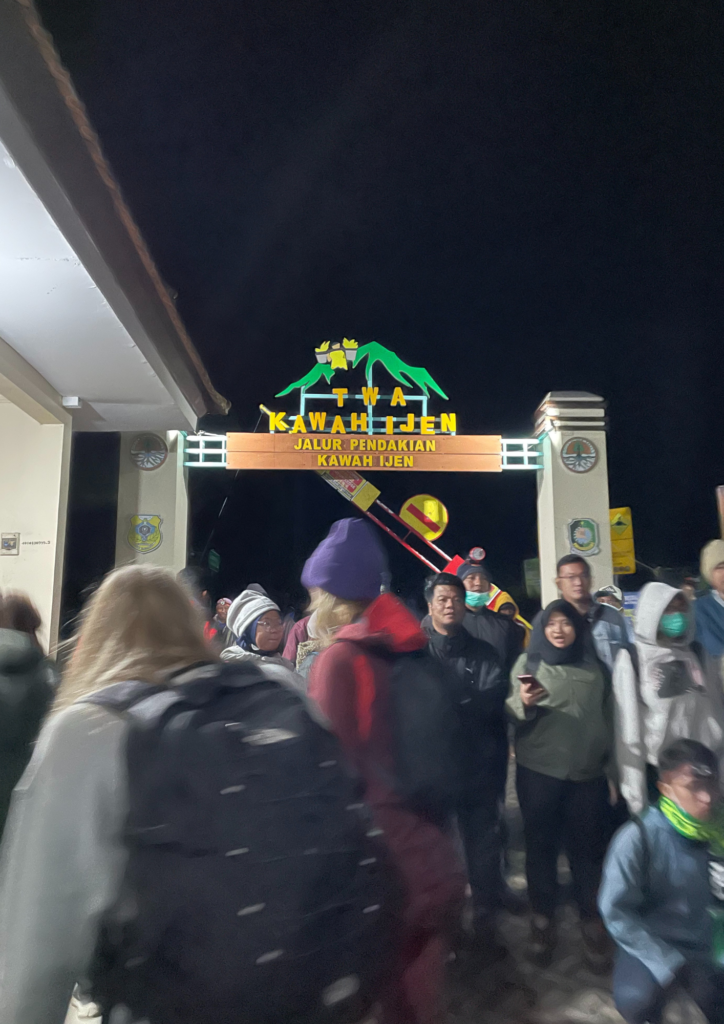
The next part is mostly flat, walking around the crater rim to get to the correct place to climb down. From the bottom of the exterior of the crater, it is also possible to get a trolley up to the crater rim. These trolleys allow you to avoid this part of the climb and are pulled by one person and pushed by another. This costs around 200 IDR. I didn’t do this, but thought it was worth mentioning if you want to save some energy. It’s also worth mentioning that these trolleys are constantly in the way of people who are on foot, so be prepared to deal with them.
While everyone told me that the first part was the “hard part”, I found that the next part was, in fact the “hard part”. Climbing down into the crater, wasn’t just walking down a steep track. There is a rough path of jagged rocks (sometimes the rocks are unstable) with a sheer drop into the crater on one side. The rocks are uneven and sometimes it is necessary to slide down on your bottom as they are too high to merely step down.
What makes this climb all the more frightening is the number of tourists they let climb this volcano. I had recently climbed Mt Batur in Bali and expected that this wouldn’t be as bad, as far as crowds were concerned, but it was very disappointing to see that it is was worse. WAY worse. At Mt Batur there were a lot of international tourists (I wouldn’t go as far as to say it was “overcrowded”) but at Ijen there were mainly Indonesian domestic tourists. At one point it was like everyone was in a queue to climb down the crater rim. If someone behind had fallen it would have been like dominoes. The number of tourists also make going down the crater all the more dangerous as there are constantly people in the way and people taking up all the available places to try and put your feet.
Aside from the sheer number of tourists, you also have to give way to the miners who work in the volcano hauling sulphur out of the crater night after night. These men carry the sulphur with two buckets joined in the middle by a stick which they carry on their back. I understood this ahead of time and didn’t mind getting out of their way at all, however they don’t always appear at the most opportune time and sometimes you end up in a precarious position trying to let the miners by you.
Up until reaching the bottom, you’re on a time limit. If you don’t reach the bottom before sunrise (about 5am) you’ll get there and you won’t be able to see the blue fire, which is the whole reason to go. If you’ve got some grand notion of being able to stand back and admire the blue fire or to get a decent picture, be prepared to be annoyed and disappointed. You can’t get a picture without someone’s fat head in the way, and you can’t get your guide to take a picture of you without some other tourist shoving you and almost ending up in the blue fire.
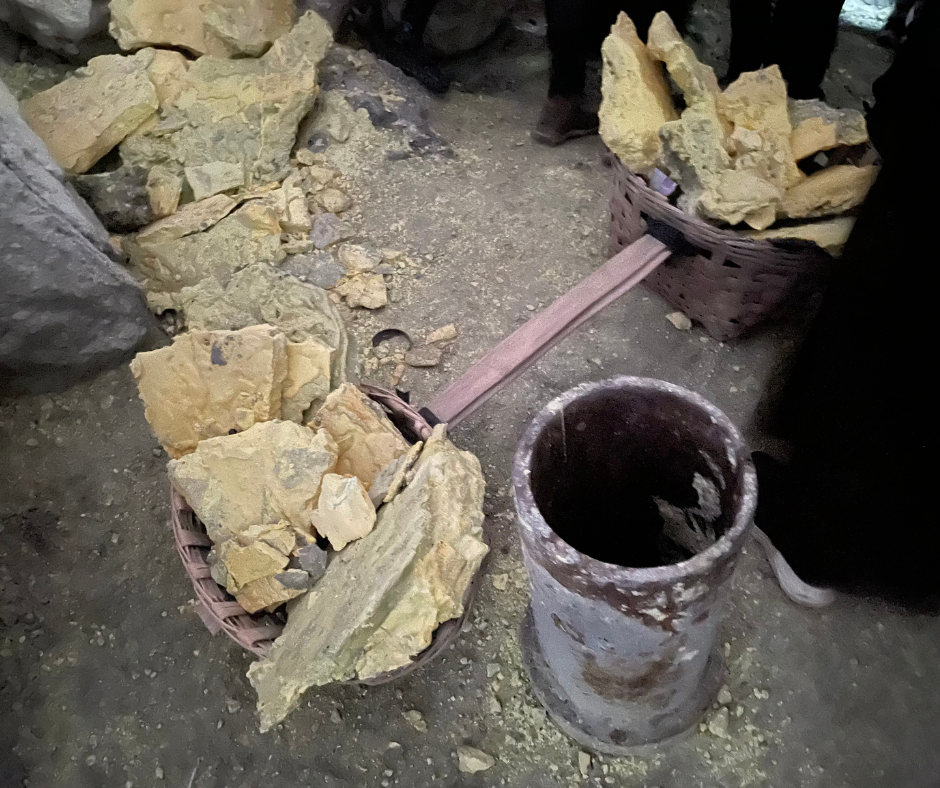
Once you have seen the blue fire, it is worth climbing just under halfway out and hanging around for a bit, this gives the hoards of local tourists a chance to clear out. Depending on the activity of the volcano and the level of smoke, you should be able to get an amazing view of the acid lake which is the largest in the world. We had quite a bit of smoke, but it didn’t both me, we could still see the lake and it made the crater look like we were on another planet – especially as the sun was now up and we were basically the only people in the crater.
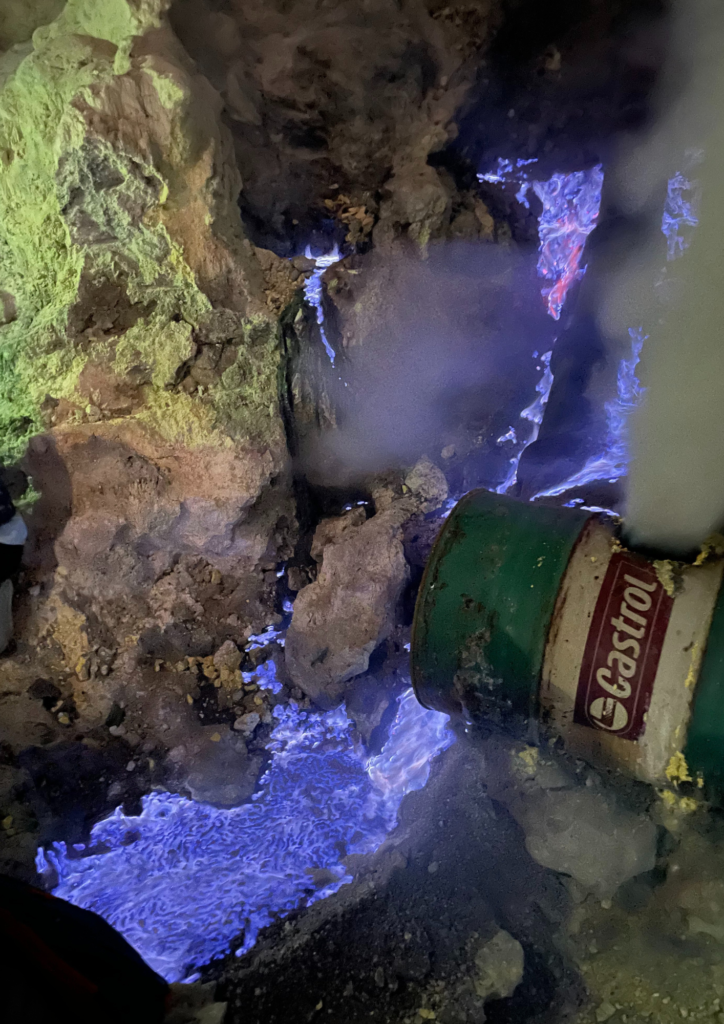
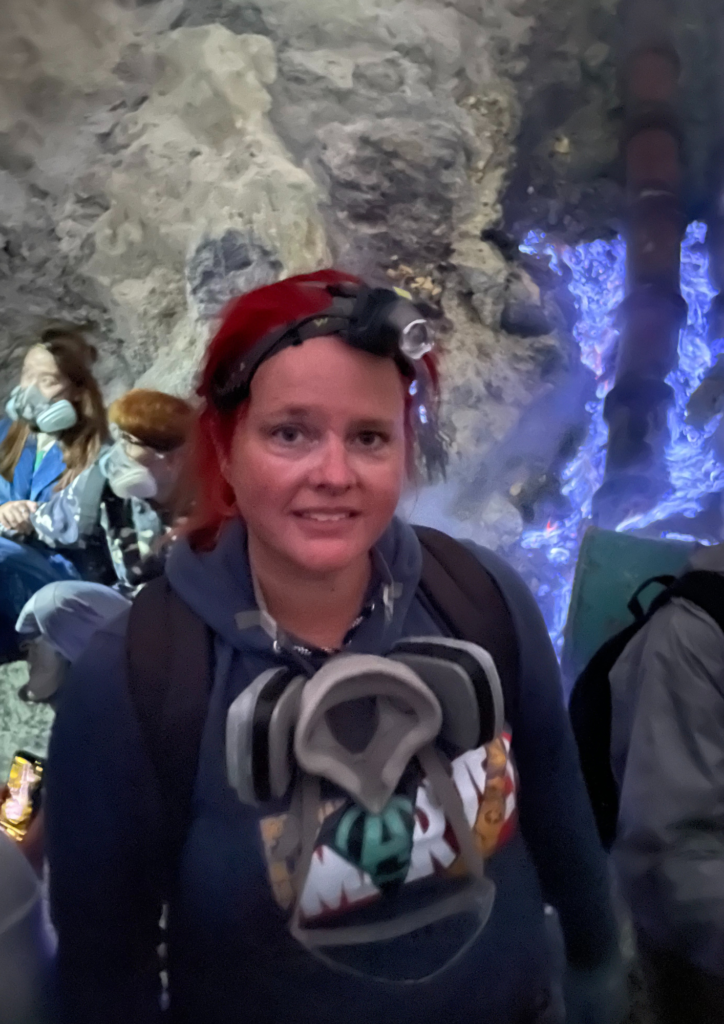
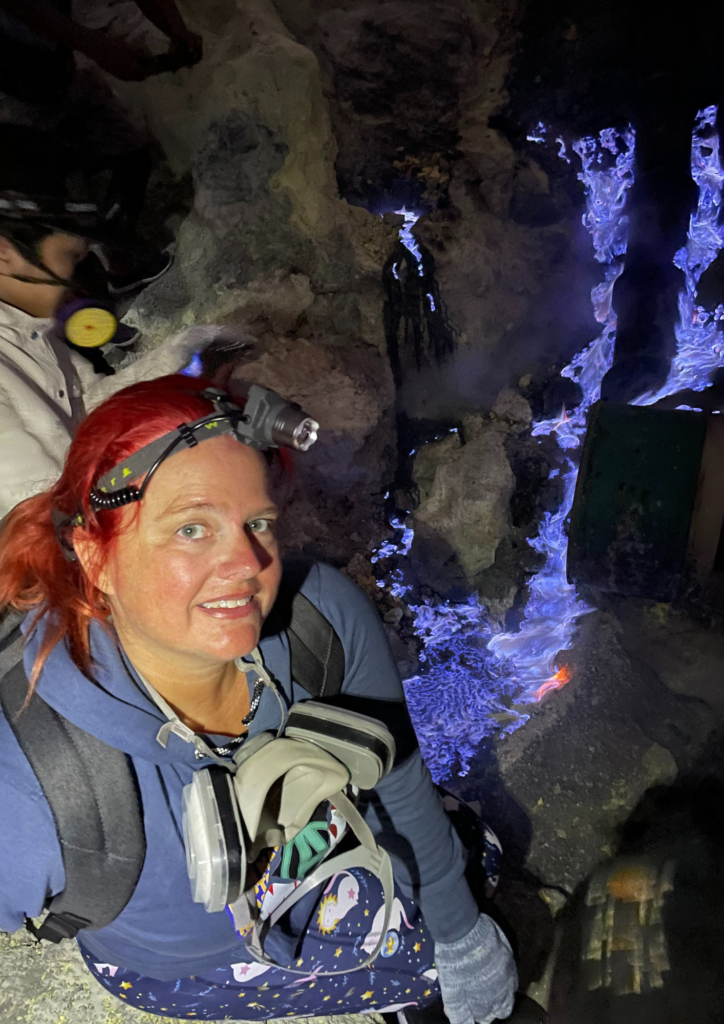
Climbing out of Mt Ijen is a bit of a dirge, most of the time when you’re climbing up a volcano or a mountain, you’re doing it to see a majestic sunrise or at least an amazing view, but at this stage you’ve already seen what you came for. That being said it isn’t that hard getting back up.
The walk back down the rim can be a bit slippery with the loose gravel on the hard surface, but if you take small steps, you shouldn’t have a problem. There is also the option of the trolley back down if you’re up for that. Again, you need to be aware of the trolleys which constantly end up behind you and which you have to dodge. One the way down the crater rim, the scenery is spectacular, and you can see a few other volcanoes, which you obviously couldn’t see on the way up in the pitch dark.

Difficulty
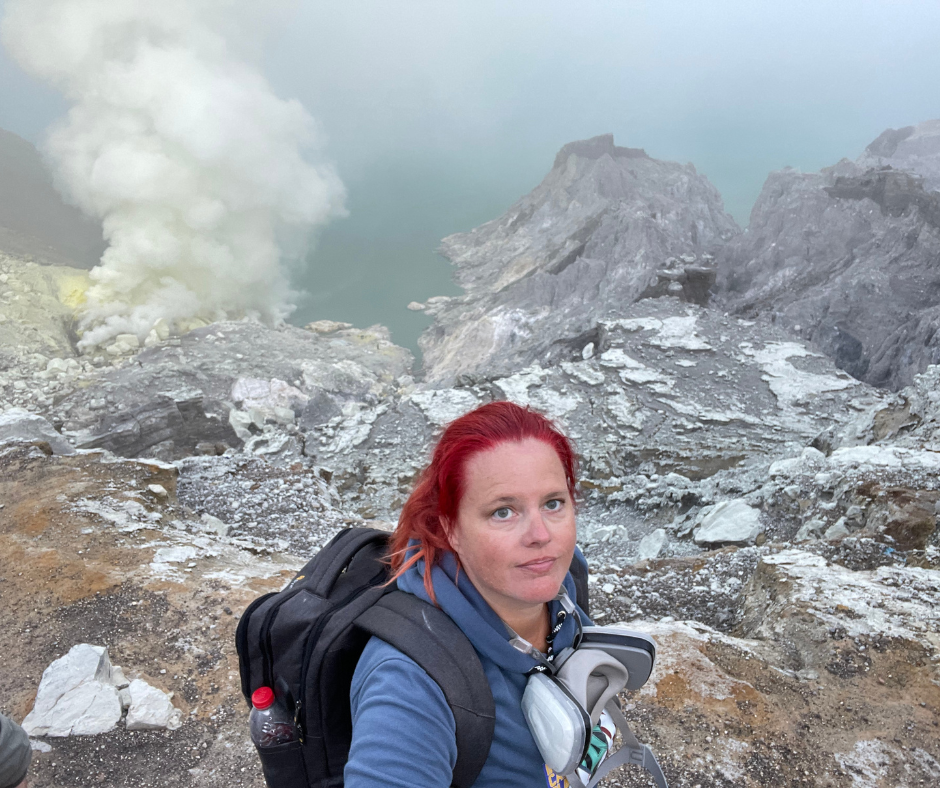
As mentioned above, how difficult something is, is subjective. What’s difficult for one person may not be difficult for another. I’d previously climbed Mt Batur in Bali on this trip, which I found hard, but not more than I could handle. People I met kept telling me Batur was nothing compared to Ijen. By the time I got to Ijen I was terrified I was either going to seriously injure myself or not make it.
As it turned out, the “hard part” of the Ijen climb (the part everyone else told me was hard) was basically the same as the “easy part” of Mt Batur. Getting up Mt Batur was quite a bit harder than Ijen in my view. We had two Dutch ladies (about 25 years old) who agreed with me on that point.
I am 40 years old and have a significant weakness in my right knee (I wear a knee brace when I climb). If you are in good health and have a decent level of fitness you shouldn’t have a problem.
Keep in mind Ijen takes a lot more time and a lot more climbing (even though it’s not as hard as Batur), because technically you’ll do two climbs. Up the crater rim and then down into the crater, followed by climbing out of the crater and the down the crater rim. Batur for example is just up and down.
Ijen also requires a gas mask (which will be provided by your guide), gloves and a jumper. You need to cover your skin so you don’t get sulphur all over it.
Safety
Ijen is a methane volcano and spews sulfuric gas. You will need a gas mask which will be provided by your tour guide or tour company. You’re not required to wear the mask, but at the bottom near the blue fire, most people can’t breathe without it.
If the volcano lets out a large spew of sulfuric gas while you are at the bottom resulting in reduced vision. You shouldn’t panic. Do not just walk or run. You could step into the blue fire or fall into the acid lake. The best thing to do is calmly put on your gas mask (which you should already have around your neck at this point) and crouch down low until the smoke clears.
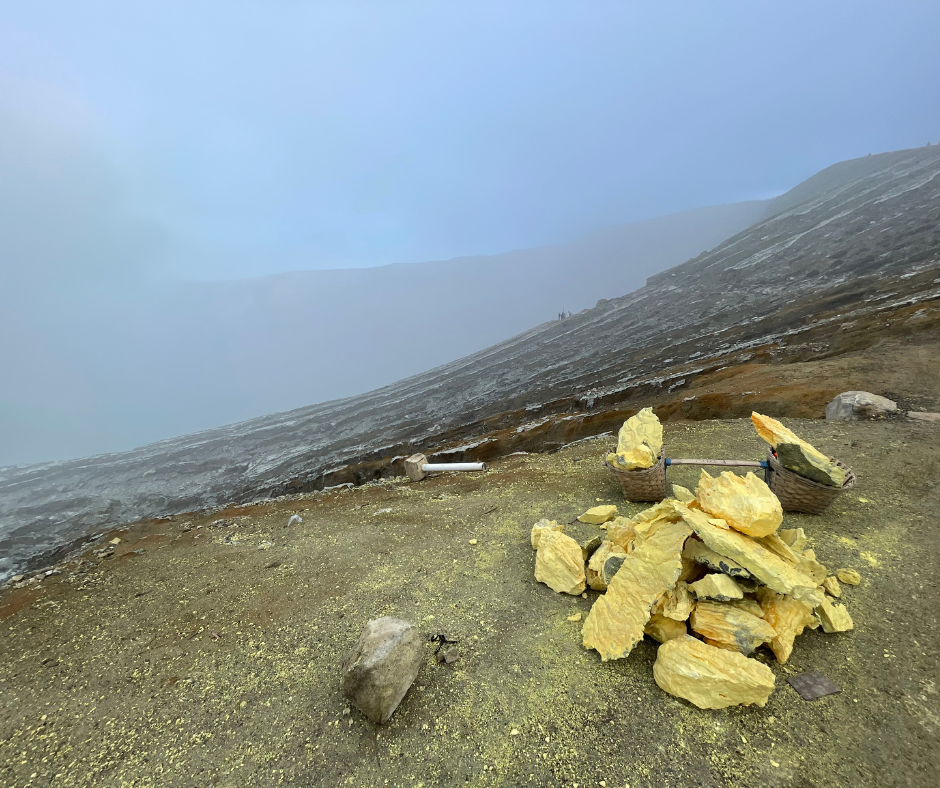
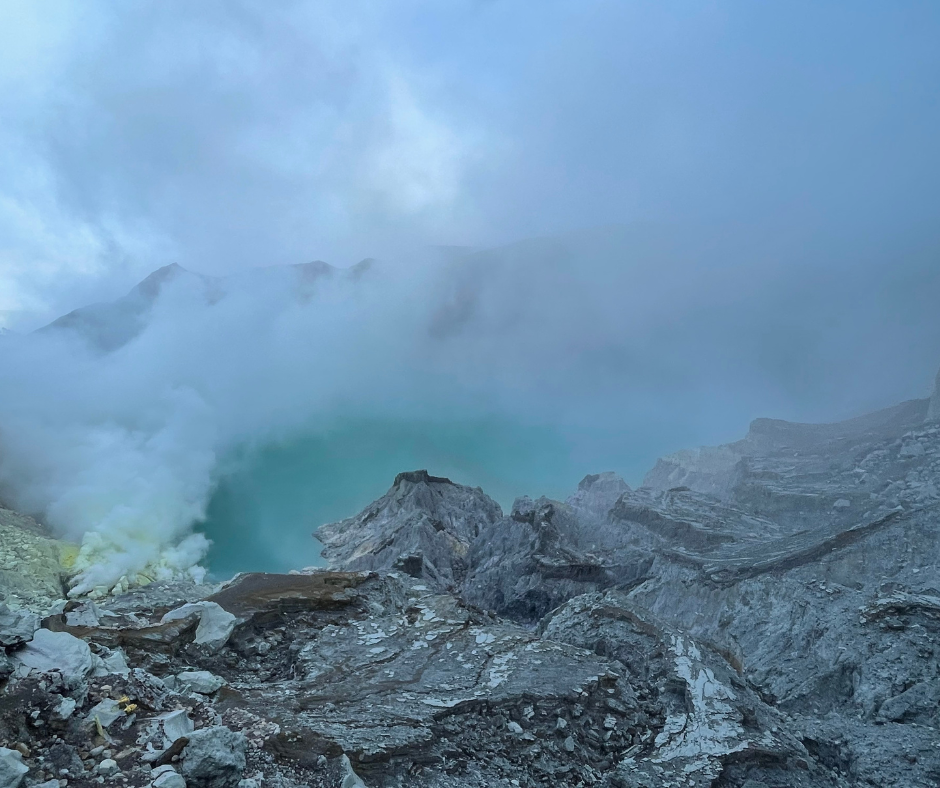
Try to refrain from touching your eyes. If even a small crystal of sulphur gets in your eyes you will be in immense pain. Flushing your eyes out with 10 litres of water won’t stop it.
What to bring
- Jumper/Hoodie – you need this to climb down into the crater to prevent getting sulphur all over you
- Gloves – stop you getting sulphur on your hands. If you REALLY need to touch your eyes, wear the gloves and remove them when you need to touch your face
- Hiking boots – NOT SNEAKERS! Bromo and Batur you can get away with sneakers. You really can’t on this one. On the climb down into the crater, you really need some serious grip and sneakers just don’t cut it. Take it from someone who didn’t know this and wore sneakers. It just made it twice as hard.
- Head lamp/miners light – your guide will usually have handheld torches available for the climb up but trust me for the climb down into the crater you need both your hands.
- Plenty of water – try not to the ‘chug’ the water. Focus on taking many shorter breaks, with small sips of water, rather that stopping for 10-minutes completely cooling down and chugging half the bottle.
Note: It is advisable to remove all real gold and silver jewellery prior to the climb as the sulphur turns this material black. Apparently, Nikon cameras don’t fare so well in the crater either, so if you have a Nikon consider leaving it behind also. Phones and other camera brands are fine.
Overall, I enjoyed climbing Mt Ijen, especially lingering in the crater after most people had cleared out. It’s probably one of the only climbs that I would do again, however I would seek advice from a tour company on when/if there is a quieter time to go. Ijen while amazing, is sadly a victim of over tourism.


